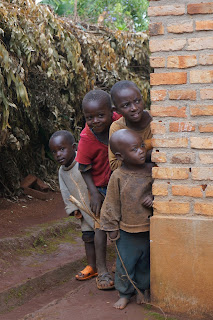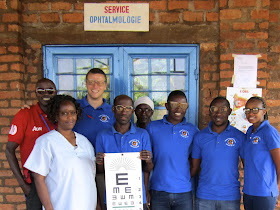by Jess Cropsey
When John & I took the Myers-Briggs personality tests during the employment process for the Post-Residency Program with Samaritan’s Purse in 2009, the results did not come as much of a surprise to us (although it was slightly concerning to our evaluators). We always knew we were pretty much opposites about everything, so we weren’t shocked when he came back as an “ESFP” and I was an “INTJ”. Different in every single letter.
John is a natural leader and has always been a visionary. Being a very practical person who likes to have a plan and be in control, I often find myself wanting to burst his bubble. “Have you thought about X?” “What about Y?” “Are you sure about Z?” I’d like to believe that I’ve grown a little in this area and have learned to keep my mouth shut more often. When we were at Tenwek Hospital in Kenya, I often had my doubts about some of the things he was planning. “Really, you’re going to start that program? We’re only here for 2 years. What if the long-term person doesn’t want this for the eye clinic?” “Wait, you’re going to do what? We’re leaving in two months!” But, when I look back at the many things that God allowed him to bring to fruition during those 2 years, I am humbled and amazed. Sometimes, instead of planning every detail out for weeks, months, or years, what’s really required is a simple leap of faith.
In a recent blog post, John shared some of his big vision for bringing eye care to the Great Lakes Region of Africa. In my mind, this has always been several years down the road at least. So, you can imagine my reaction when I happened to glance at his computer the other day and saw this screen shot:
Wait….what?! My husband is looking at military-grade boats to cruise to the war-torn land of Eastern Congo on a lake infested with crocodiles and hippos?! Is he serious or is he just dreaming here? His response is that if he’s going to be chased by someone (or something) on the lake, he wants to be the fastest one out there. Well, at least that’s a little bit of forethought, right? (Meanwhile, I’m thinking I better get my teaching certificate renewed just in case and make sure his life insurance policy is up-to-date.)
To my relief, John often quotes a line that was shared with him many years ago:
A leader is one step ahead of the group. A visionary is two steps ahead. A martyr is three steps ahead.
Not sure if that’s exactly how it goes or who said it first, but you can pray for this INTJ to be a good partner to my visionary husband in helping his God-inspired dreams and visions to become a reality in this little corner of the world. John is moving forward with exploring plans to start a pilot eye clinic in Congo. There are still lots of unknowns at this point, but you can pray along with me that the Holy Spirit would guide his plans and give him wisdom. And that I would know when to speak, when to listen, and when to just pray!
And if you have any good ideas for a name for this new outreach along Lake Tanganyika, we could use a little help in this department. The current front runner is “Crocs & Cataracts: Taking a Bite Out of Blindness”. Need I say more? :)

















































